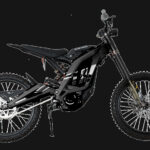Intro: Embarking on a DIY Bike Camper Trailer Project
Have you ever dreamed of hitting the open road, or perhaps a scenic bike trail, with all the comforts of a camper, but powered by your own trusty e-bike? Building a Bike Camper Trailer might sound ambitious, but it’s an incredibly rewarding project. My friends and I recently embarked on this adventure, constructing a lightweight camper designed to be towed by a standard 250-watt e-bike. Our DIY bike camper trailer tips the scales at around 160 pounds, and while we’re already envisioning future upgrades, I’m excited to share our build process and initial tests with you. I plan to use this bike camper trailer for exploring various locations and campsites, and I can’t wait to see where it takes me.
Crafting the Bike Camper Trailer: How We Made It
For this project, I decided to document the build process in a video, as it seemed like the best way to showcase each step. You can check out the detailed “how-to” video on my secondary YouTube channel, Step 2. This channel is dedicated to more casual, behind-the-scenes content, side projects, and fun, shorter videos – essentially, the projects that are a bit outside of my main channel’s focus. It’s a place for spontaneous uploads and creative explorations.
Building a camper trailer that could be pulled by a bicycle has been a long-time ambition of mine. It’s been high on my “camping bucket list,” if such a thing exists! When it comes to a DIY bike trailer that’s light, affordable, and functional, there are many approaches you could take. I opted to use coroplast sheets. Coroplast, essentially corrugated plastic, is fantastic because it’s surprisingly durable and strong while remaining remarkably lightweight.
I am genuinely thrilled with how this DIY bike camper trailer project turned out. It perfectly balances functionality and the fun of a hands-on build.
Detailed Bike Camper Trailer Construction
The initial concept for this bike camper trailer was sketched out in a moment of couch-based inspiration, though the idea had been brewing for quite a while. The goal was to create a space large enough for comfortable adult occupancy, yet compact and light enough to be realistically pulled by a bicycle. After finalizing the dimensions and layout, I selected coroplast sheets and styrene sheets as the primary building materials. Both are excellent choices due to their strength-to-weight ratio and affordability.
I decided on a curved front for the trailer, which is not only more aerodynamic than a standard rectangular shape but also adds a unique aesthetic touch. The base and floor are constructed from plywood for added rigidity. For the wheels, I repurposed a set from an old dolly, mounting them with a length of ready rod as an axle. Ensuring a snug fit throughout the construction was a priority, aiming to minimize any water ingress and keep the interior dry.
Interestingly, the door hatch is a repurposed component from a decommissioned camper, giving a new life to an older part.
For added durability and a rugged look, I installed checker plate trim along the bottom edges. I also integrated lights for safety and visibility, though wiring them is still on the to-do list. Ventilation was a key consideration, especially for comfort during warmer months. Based on my experience with coroplast shelters, a roof vent is essential to prevent the interior from becoming unbearably hot.
Once the main construction was complete, it was time for the first test run. Initially, the bike camper trailer felt a bit heavy and unstable, which isn’t ideal when navigating roads or trails. To remedy this, I redistributed the weight inside, shifting more of the load towards the rear. This adjustment significantly improved stability and handling. The original hitch design, which connected to the bike seat post, proved to be unsuitable. We modified it to attach directly to the bike frame instead. This revised hitch system worked perfectly, providing a secure and stable connection.
While the bike camper trailer is largely complete, I see it as an ongoing project with room for refinement. I’m grateful for the community feedback and suggestions received on YouTube, offering great ideas for future enhancements. I plan to share updates as any significant modifications are implemented.
Cheers to DIY adventures!
Bike Camper Trailer Design Blueprints
Below are the original design sketches that guided this DIY bike camper trailer build. You can see the initial concept and how it evolved into the finished product. It was a truly enjoyable process to plan and bring to life.
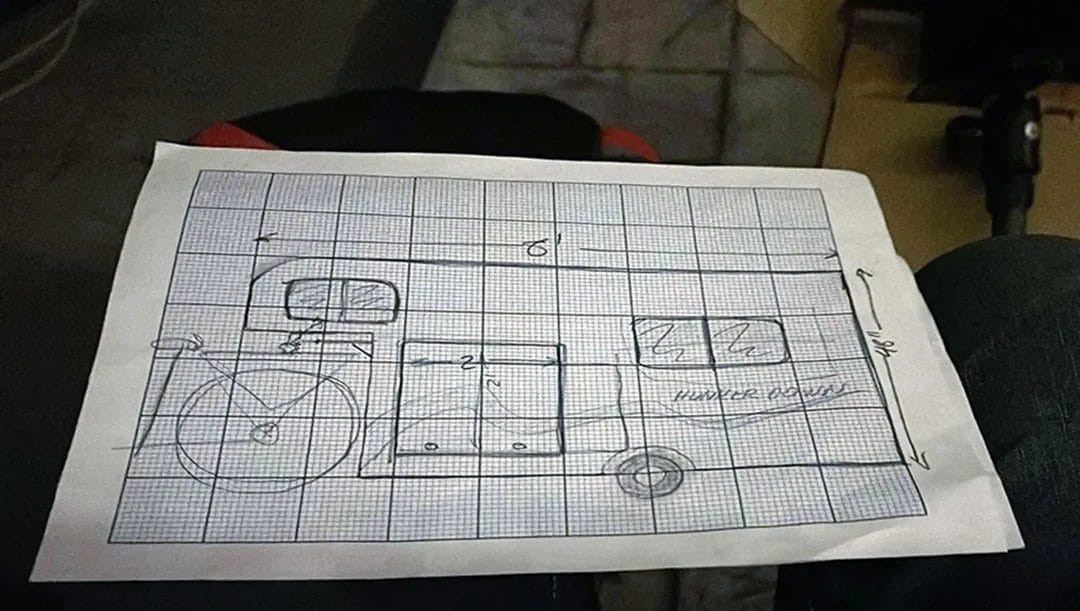 Initial side view sketch of the DIY bike trailer blueprint, illustrating the envisioned dimensions and structure.
Initial side view sketch of the DIY bike trailer blueprint, illustrating the envisioned dimensions and structure.
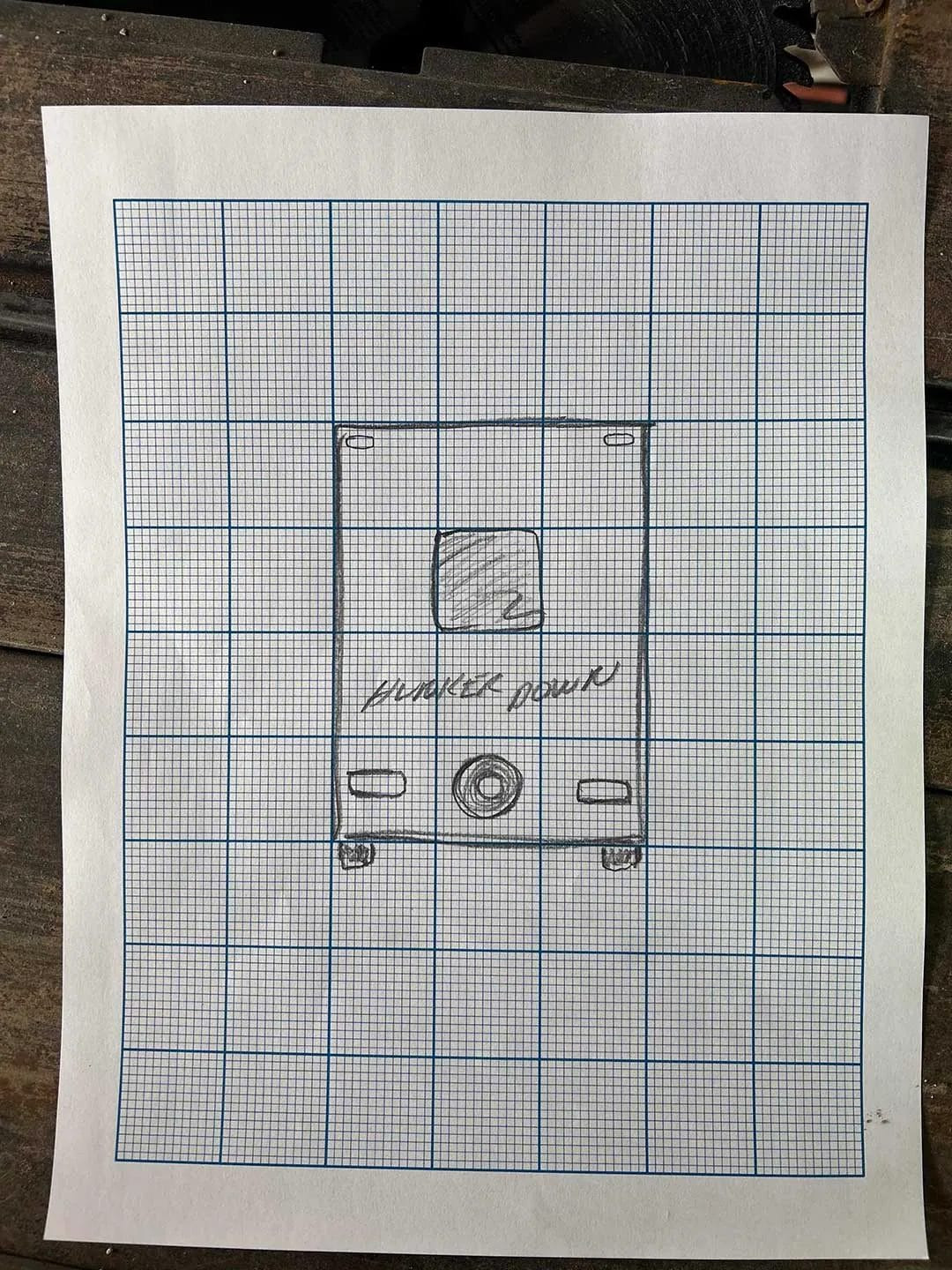 Initial vertical back view sketch of the DIY bike trailer blueprint, providing a perspective on the rear design and scale.
Initial vertical back view sketch of the DIY bike trailer blueprint, providing a perspective on the rear design and scale.
The Completed Bike Camper Trailer
It’s likely that this bike camper trailer will always be a work in progress, with ongoing tweaks and improvements possible. However, here’s a look at the current state of the finished DIY bike camper trailer.
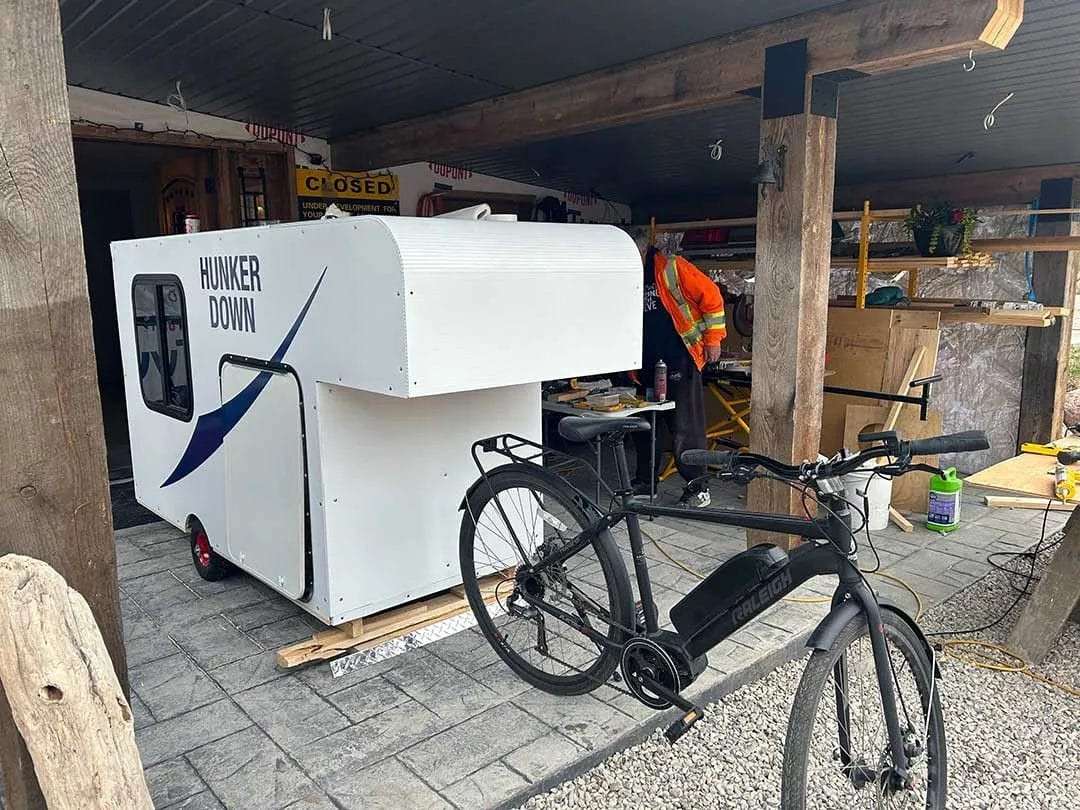 The DIY bike camper taking shape during the construction phase, showing the assembly of the frame and body panels.
The DIY bike camper taking shape during the construction phase, showing the assembly of the frame and body panels.
Of course, no DIY camper is truly complete without a custom decal!
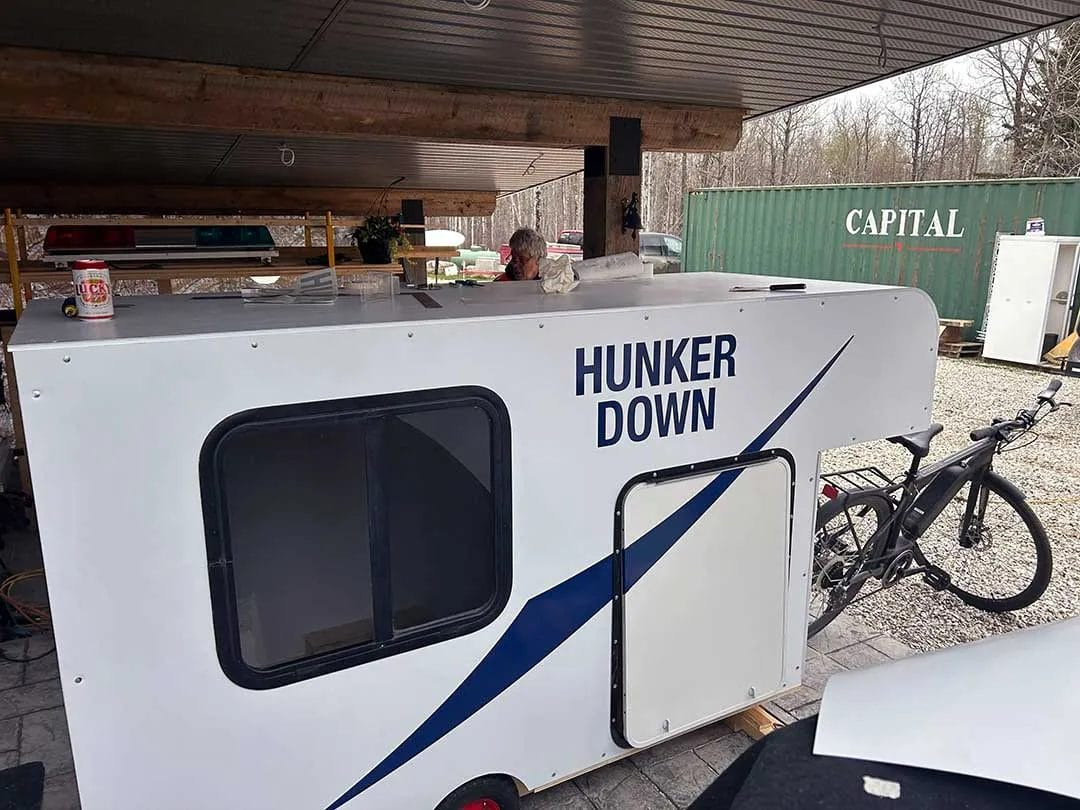 Side view of the partially built DIY bike camper trailer, highlighting the coroplast shell and overall shape before final touches.
Side view of the partially built DIY bike camper trailer, highlighting the coroplast shell and overall shape before final touches.
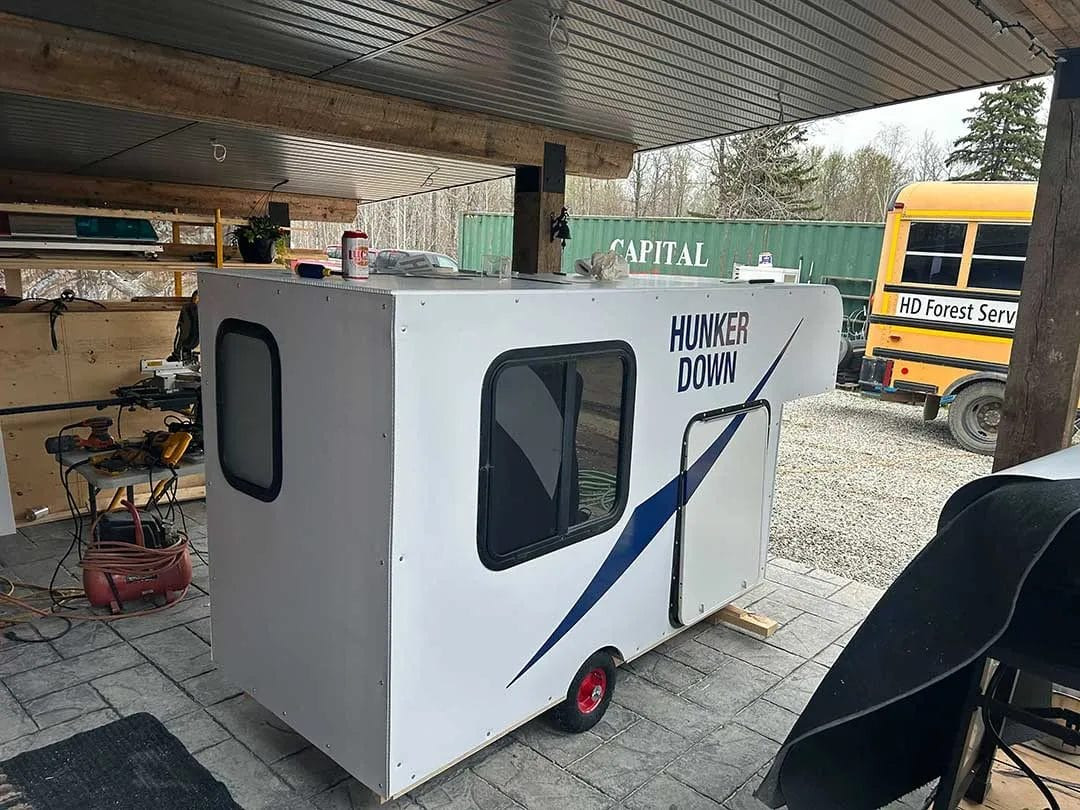 Rear view of the DIY bike trailer camper during construction, showcasing the hatch door and frame before completion.
Rear view of the DIY bike trailer camper during construction, showcasing the hatch door and frame before completion.
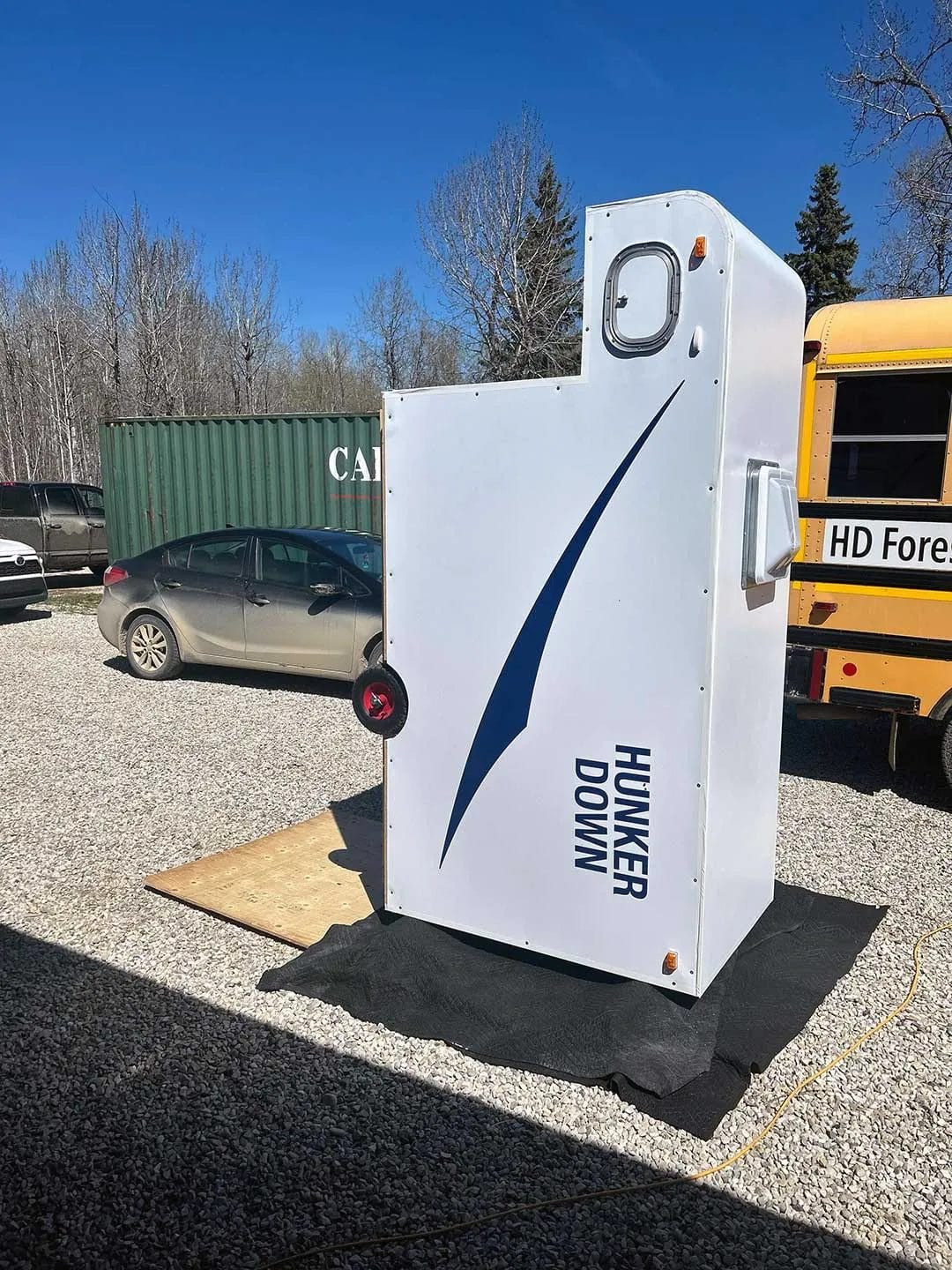 The DIY bike trailer camper positioned upright to facilitate wheel installation, showing the undercarriage and frame structure.
The DIY bike trailer camper positioned upright to facilitate wheel installation, showing the undercarriage and frame structure.
While the wheels might be on the smaller side, their solid rubber construction ensures durability and longevity without the worry of punctures.
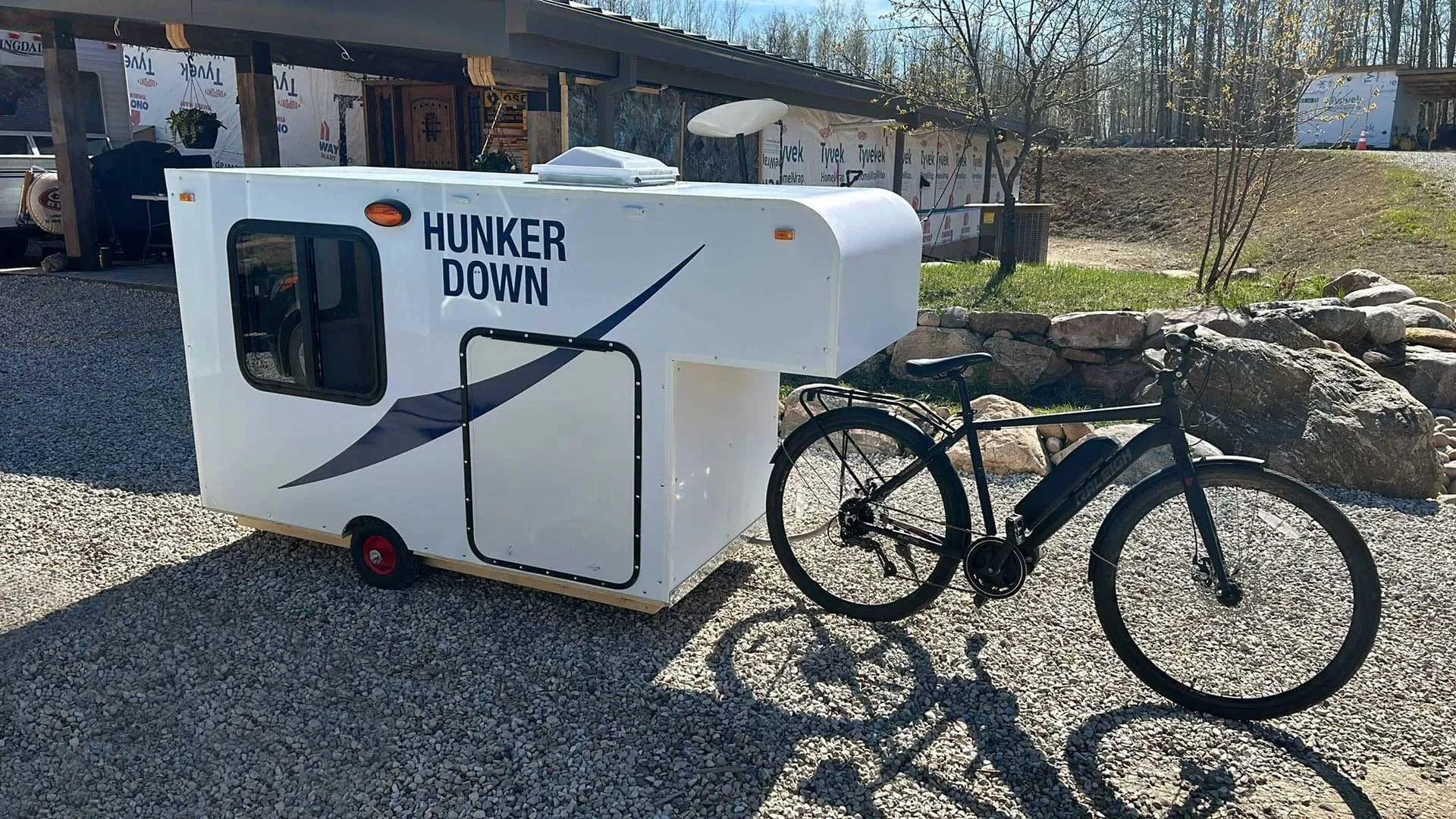 First bike hitch-up of the DIY bike trailer camper to the bicycle, revealing the initial setup before hitch adjustments.
First bike hitch-up of the DIY bike trailer camper to the bicycle, revealing the initial setup before hitch adjustments.
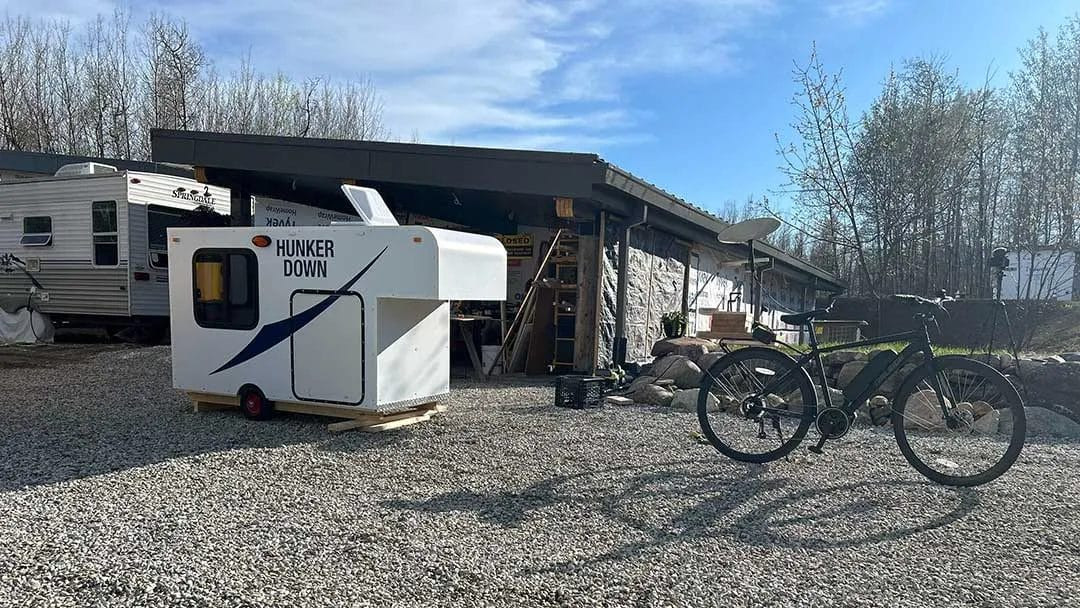 Testing the DIY bike trailer camper with the bicycle, indicating the need for hitch redesign for improved functionality and stability.
Testing the DIY bike trailer camper with the bicycle, indicating the need for hitch redesign for improved functionality and stability.
Detaching the bike camper trailer from the bike is quick and easy, which is convenient for storage or simply using the bike independently.
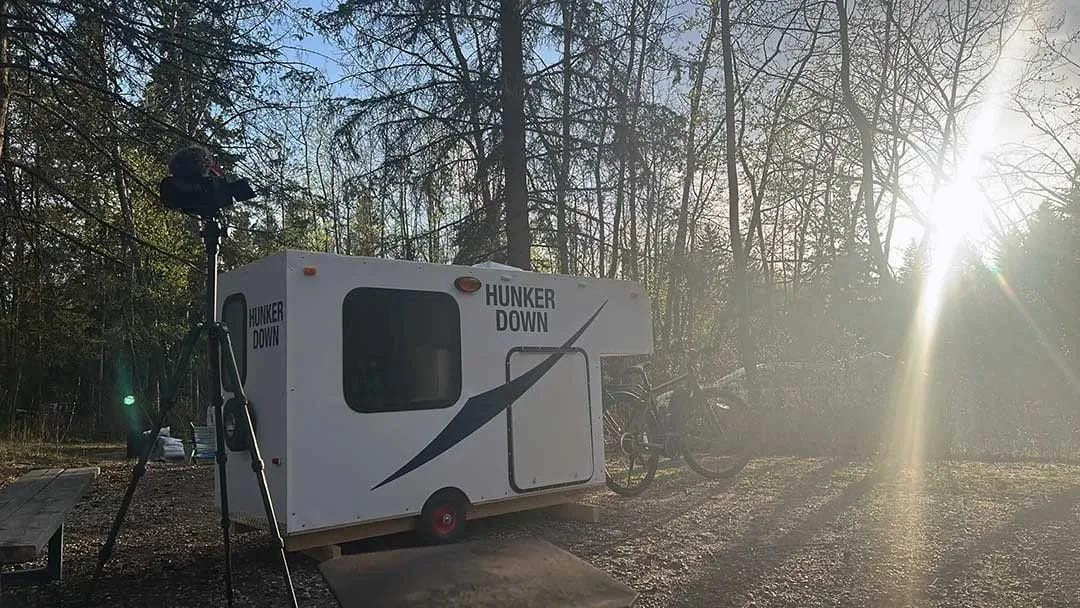 The DIY bike trailer camper at its first campsite in a wooded area, illustrating its practical use in a natural setting.
The DIY bike trailer camper at its first campsite in a wooded area, illustrating its practical use in a natural setting.
Thank you for following along with this project! It’s been one of the most satisfying builds I’ve undertaken in a while.
Happy trails and hunker down! Cheers.

